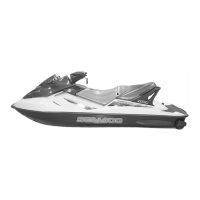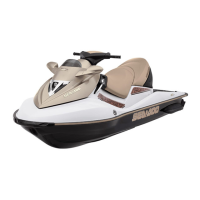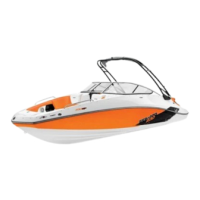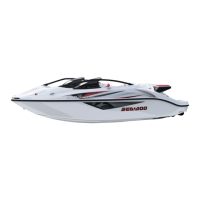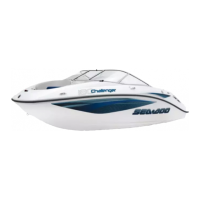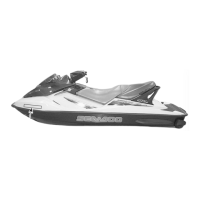18 SAFETY INFORMATION
Do NOT Operate your Boat
without Performing the
Following Checklist:
Each Boating Day
CO Detector
It is strongly recommended that you
have CO detectors installed in boats
with canvas enclosures. Monitors are
available from your dealer. Monitors
should be professionally installed and
calibrated.
NOTE: A CO detector is not a gas fuel
vapor detector. Gas fuel vapor detec-
tors do not monitor the buildup of CO
in an enclosed area.
Lanyard Stop Switch
This safety device automatically stops
the engine if the lanyard is attached to
the operator and the operator falls
from the control station. Refer to the
engine manual for detailed information
about using this switch.
The stop switch incorporates a shutoff
switch, switch clip, lanyard, and lan-
yard clip. The lanyard clip must be se-
curely attached to the operator’s PFD,
clothing, arm, or leg. Be sure to attach
the lanyard to a place where it is free
of obstructions and to something that
will move with the operator if he or she
leaves the helm station. If the engine
shuts down because the lanyard cap
was removed, the cap must be rein-
stalled on the lanyard stop switch be-
fore the engine can be restarted.
TYPICAL — IGNITION INTERRUPTER
(STOP SWITCH) WITH LANYARD
1. Stop switch clip
2. Safety lanyard
OPERATION ✔
Make sure you and your passengers
know where exhaust outlets are
located on the vessel
Educate all passengers about the
symptoms of CO poisoning and
where CO may accumulate
When docked or rafting with another
boat, be aware of exhaust emissions
from the other boat
Confirm that water flows from the
exhaust outlet when the engine(s)
is(are) started
Listen for any change in exhaust
sound, which could indicate an
exhaust component failure
Test the operation of each CO alarm
by pressing the test button
F10H0JZ
1
2
lmo2005-006a_1.book Page 18 Wednesday, July 7, 2004 1:06 PM
